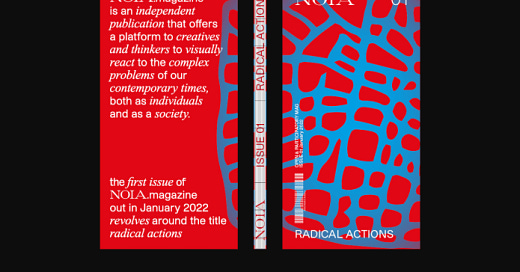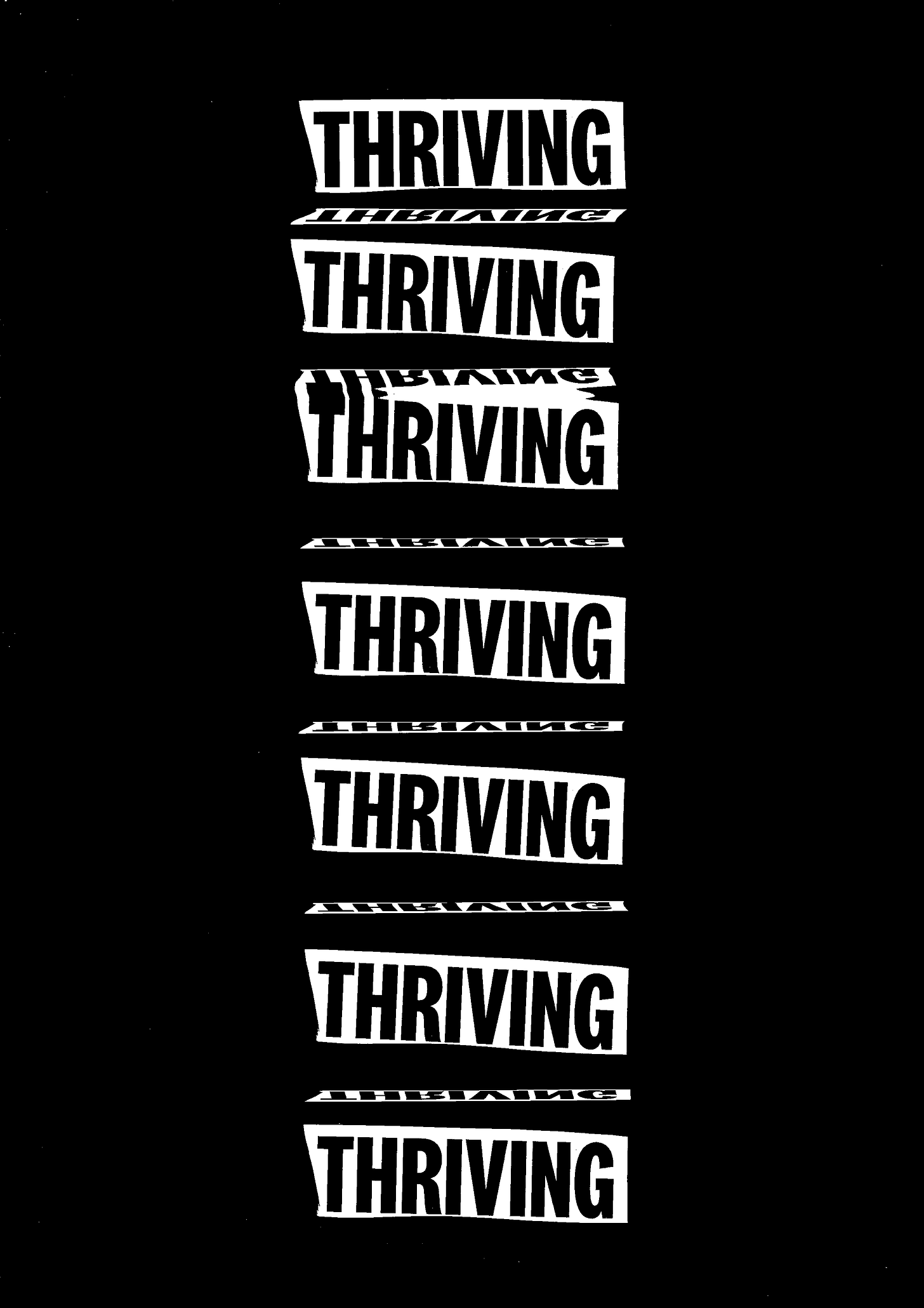NOIA Magazine, a publication where I contributed with my work, is on the verge of coming out and it’s now on pre-sale if you want to support the project (and in the process get yourself a beautifully crafted magazine). As the editors describe it:
NOIA - the Italian word for boredom - is an independent magazine born from a creative reaction to lockdown and isolation. Rooted in collaborations between artists, designers, photographers, writers, and other creatives, NOIA sources a diverse range of expressions and perspectives to create visual responses toward contemporary critical issues.
What I like about NOIA is how each work was paired up into a collaborative diptych (reminiscent of Ruba Abu-Nimah’s instagram), where two creatives that never met are now found in an open-ended conversation. In a first moment between each image and the editor, and later on to include the reader.

In the above example, my work showcasing a manipulation of the word ‘Thriving’ using a scanner was paired with the work of Sam Stewart, on the right, where he uses scans of his face as input for generative art using GANs (Generative Adversarial Networks).
(In a very crude and naive explanation, without getting much into the depths of it, GAN art works by giving a large set of training data to two neural networks that compete with each other in the [artist’s] hope that something aesthetically pleasing will come out at the other end. From AI written novels, things that don’t exist, faces of people who do not exist, posters of movies that don’t exist, synthetic ecosystems or a never-ending stream of pre-19th looking portraits, the possibilities seem endless.)

So, what do both approaches have in common? In my view, there are several parallels we can trace between Xerox Art and GAN Art. Both appropriate technology in favor of the artist’s intentions, create strangely familiar output through the manipulation of its initial input(s), make unexpected connections between otherwise disparate elements, give new meaning to the original material through its manipulation…
… But in the end I would sum up these common points into one key narrative: They promote a conversation between the creator and the medium where the ‘final’ image is only a snapshot of that conversation.
This emphasis on the process of generative art is also noted by Mario Klingemann in his work Memories of Passerby I:
“It feels almost wrong to just pick a single thing [that the program produces]. Because, yes, it can create a lot of images, but it’s more magical to see it at work.” — Mario Klingemann quoted on The Verge
It’s clear that artists’ interest in GANs, which has dominated the aesthetics of the last few years, share similarities with the aspirations of Xerox artists in the 60s: The pursuit of a romanticized narrative about human-machine creativity coupled with a wish for infinite (re)production where each new output is as aesthetically unique as it is absurd.
Maybe a key difference is the political stance that emerges from this human-machine conversation. While Xerox’s appeal was in its democratic potential that supported quick’n’easy mass-production and experimentation, today, GANs’ main spirit of generative abundance is, ironically, mostly associated with NFTs’ ethos of artificial scarcity.
PS. Don’t forget to support NOIA if you can!









